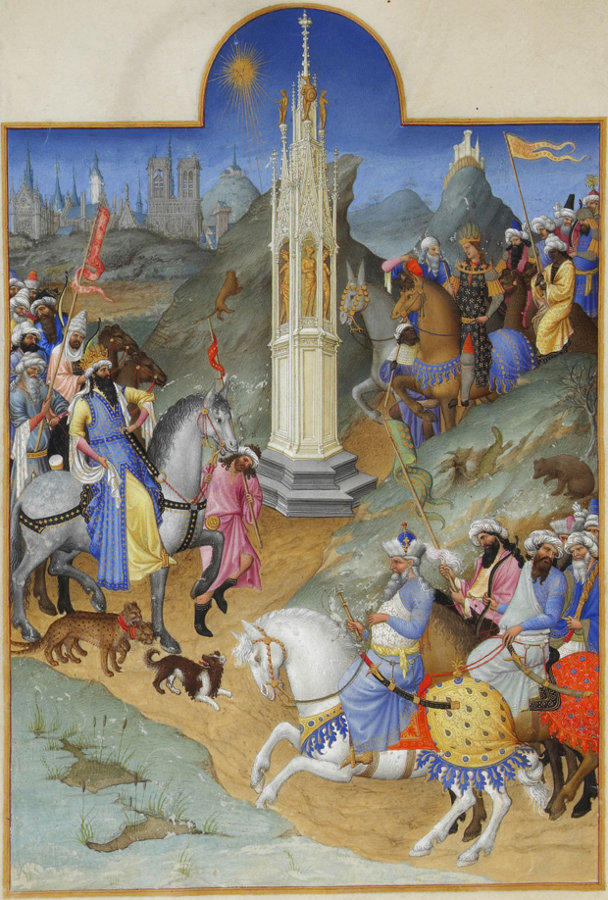Find the perfect fit with Amazon Prime. Try Before You Buy.

Join Amazon Prime - Watch Thousands of Movies & TV Shows Anytime - Start Free Trial Now
Les Tres Riches Heures du Duc de Berry, Ms 65 f51v, 1416AD
The Meeting of the Magi

A larger image of The Meeting of the Magi, Les Tres Riches Heures du Duc de Berry, Ms 65 f51v.
The scene represents the legend of the Magi meeting near Jerusalem. The legend of the wise men was one of the many medieval picturesque traditions;
imaginations were stirred by the journey from the East to worship the Infant Jesus and present Him with gifts of gold, frankincense, and myrrh.
Although Saint Matthew, the only Evangelist to mention the Magi, simply states that "there came wise men from the East to Jerusalem,"
from the time of the commentaries of the Church Fathers the Magi's number was traditionally fixed at three and they were generally believed to have been kings,
come from faraway lands of gold and spice.
Melchior, the first, was visualized as an old man presenting gold, Caspar, the second, as a beardless youth offering incense, and Balthasar, the third,
as a mature bearded man bringing myrrh.
In this miniature the three Magi are represented in accordance with these conceptions.
Coming from different parts of the world, they meet at a crossing marked by a delicately ornamented Montjoie,
such as those used at the time of the Crusades to indicate sites from which Jerusalem could he seen.
At the lower right, Melchior seemingly wears the coiffure and dress of the Byzantine Emperor, Manuel II Paleologus
(cf. folio 22r).
On the left, Balthasar, looking rather like a sultan with his black beard and turban, was inspired by an
equestrian portrait of Constantine on a gold medal,
by Veronese artist Antonio Pisano, owned by the Duc de Berry (a copy is now in the Bibliothèque Nationale).
Caspar, on the upper right, his traits reminiscent of the first Caesars, of whom the Duke also owned medals, now lost.
To emphasize the Oriental origins of the kings, the Limbourgs represented all the figures of the retinue turbaned and accompanied by exotic animals, camels and cheetahs.
From the crossroads, we see a city, meant to be Jerusalem. But the buildings are easily recognizable as those of Paris: on one side the Sainte-Chapelle, the Palais, Notre-Dame,
and, on a little hill, the Abbaye de Montmartre. Rising on the other side is probably the Chateau de Montlhéry.
References:
Les Tres Riches Heures du Duc de Berry at Christus Rex
Ottoman Cavalry in Armies of the Middle Ages, Volume 2 by Ian Heath, based on Les Tres Riches Heures du Duc de Berry
From the same manuscript: Très Riches Heures du Duc de Berri, folio: 52r Adoration of the Christ Child
Back to Ottoman Illustrations of Costume & Soldiers in the 15th to 19th Centuries


